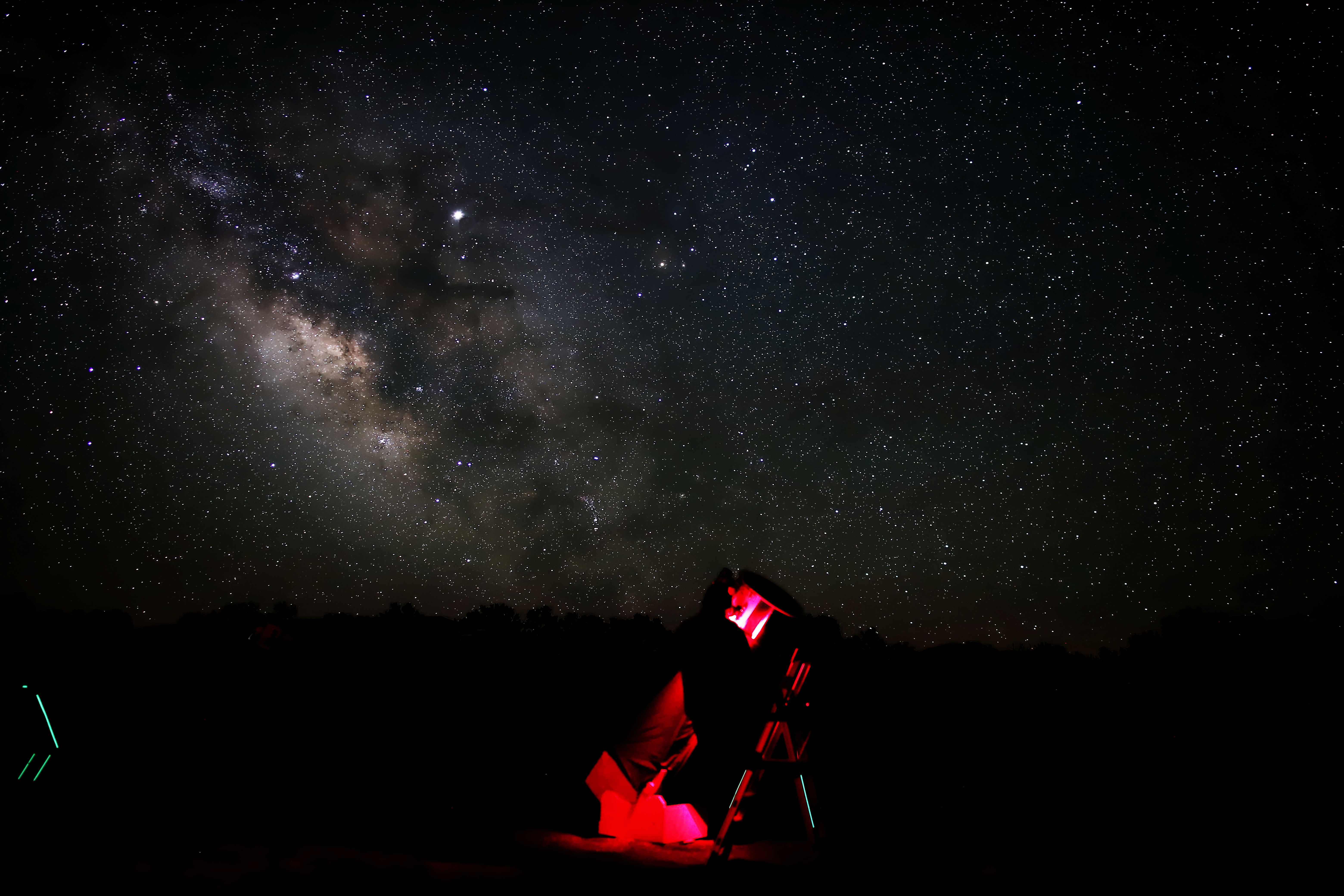Heading West for Dark Skies
By Chris Brandt
Five ASKC members recently set out for the dark skies of the Rocky Mountains, SW of Colorado Springs. We left on a Saturday morning, arriving by 4:30pm MDT after a nearly 10 hour drive. We quickly set up tents, canopies, and of course, several large scopes. Having joined the Colorado Springs Astronomical Society (CSAS) we were lucky to have use of their dark sky site, located 7,700 feet above sea level with virtually no light domes in any direction! Days were spent charging batteries, cooking over propane stoves, resting, and hiking around the 35 acres owned by the CSAS. The site is also the home of the Rocky Mountain Star Stare. But we all know you didn't come here to read about the daytime activities, so let's get to the nights!
Credit: Gary McDaniel Pictured: Lario Yerino
When night fell and lingering clouds moved out on night 1, we marveled at the darkness above, the sky covered with stars against a black background. The Sky Quality Meter confirmed what our eyes saw; 21.95 MPSA at zenith, which converts to a Naked-Eye Limiting Magnitude (NELM) of 6.60! Wow! Temperatures quickly fell to upper 40s with almost no breeze. Several started working on AL programs while a couple others focused on photography of the milky way and deep sky objects. The whale and needle galaxies were memorable views of night one with my observations logged as:
NGC 4565 - Needle Galaxy - Very bright, very large, awesome dust lane just NE of core, spiral arms extend through entire FOV of .30° at 237x with the 8mm Delos. Beautiful. NGC 4562 easily seen as 'Dim companion to NGC 4565, no noticeable core, even surface brightness, small, elongated NE to SW' at 110x in a .66° FOV with the 17.3mm Delos.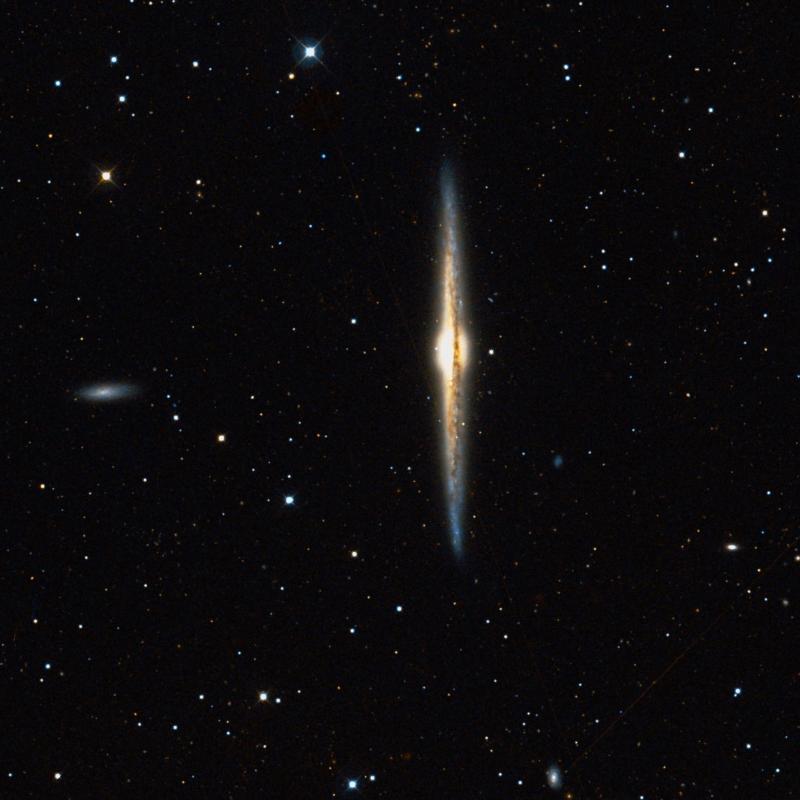
Pictured Above: NGC 4565 (Middle), NGC 4562 (Left). Credit: wikisky.org
NGC 4631 - Whale Galaxy - Large, bright, edge on spiral galaxy with arms extending across entire field of .30° at 237x with the 8mm Delos. Very obvious companion galaxy NGC 4627 just to the N. Bright knot just slightly East of center. Great view.
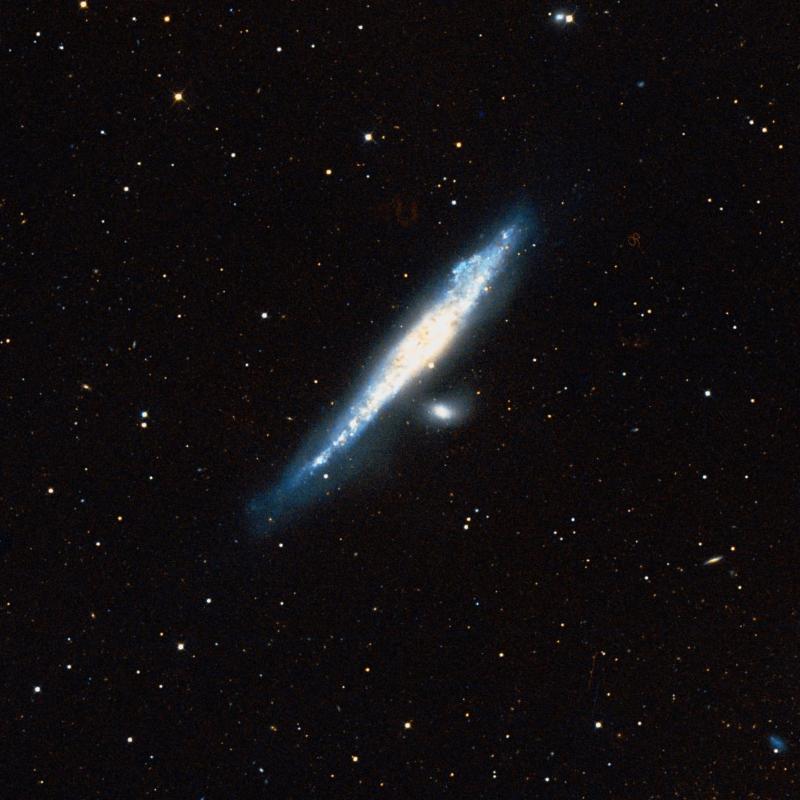
Pictured Above: NGC 4631 (Middle), NGC 4627 (Small companion to NGC 4631). Credit: wikisky.org
Around 6pm on night 2, we had a wind turned dust storm that wreaked havoc on our camp. Although no telescopes were harmed, the canopies had to come down, and most importantly, dinner was disrupted in a big way! This storm also might have been part of the reason that, while skies cleared shortly after dark, the atmosphere left objects looking hazy at anything more than low (100x) power until nearly 1am. Temperatures fell from 55°F at dark to 41°F by 3am when the moon was washing out the dark sky, and we had some slight gusts of wind but nothing sustained. SQM readings ranged from 21.83 - 21.79. Shortly after 2am, I focused my scope on one of the best sights I've ever seen through a scope in my short 5 years in the hobby; NGCs 5985, 5982, and 5981. Fitting just inside my .30° FOV at 237x with the 8mm Delos was a face-on spiral, face-on elliptical, and edge-on spiral, all in a nearly perfect line! What an awesome sight to behold!
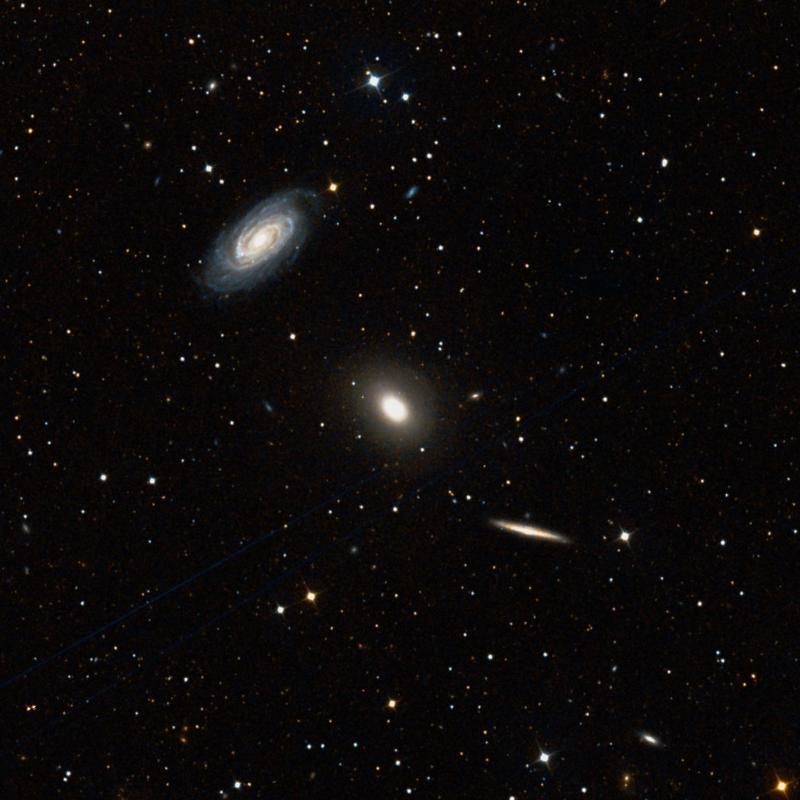
Pictured Above: NGC 5985 (top left), NGC 5982 (middle), NGC 5981 (bottom right). Credit: wikisky.org
Night 3, while not as good of sky conditions as Night 1, was the clearest night, giving quality views from 11pm until the moon started brightening the sky shortly after 3am. Temperatures ranged from 55°F at dark to 42°F at 3am, with some wind causing it to feel much cooler. SQM readings were 21.94 just after 11pm and fell to 21.85 before moonrise. One of the most talked about objects we saw on any night was none other than NGC 3991, pictured below. While this object was easily the dimmest in the trio, it stood out because of its obvious brightened "core" on one side. Upon further investigation, I realized that this brightening was actually caused by an interacting galaxy, UGC 6933. Here was my observation notes for this object:
NGC 3991 - Dimmest of a trio of galaxies, edge-on, with an obvious brightening on the N side, which appears to be UGC 6993! Very cool!
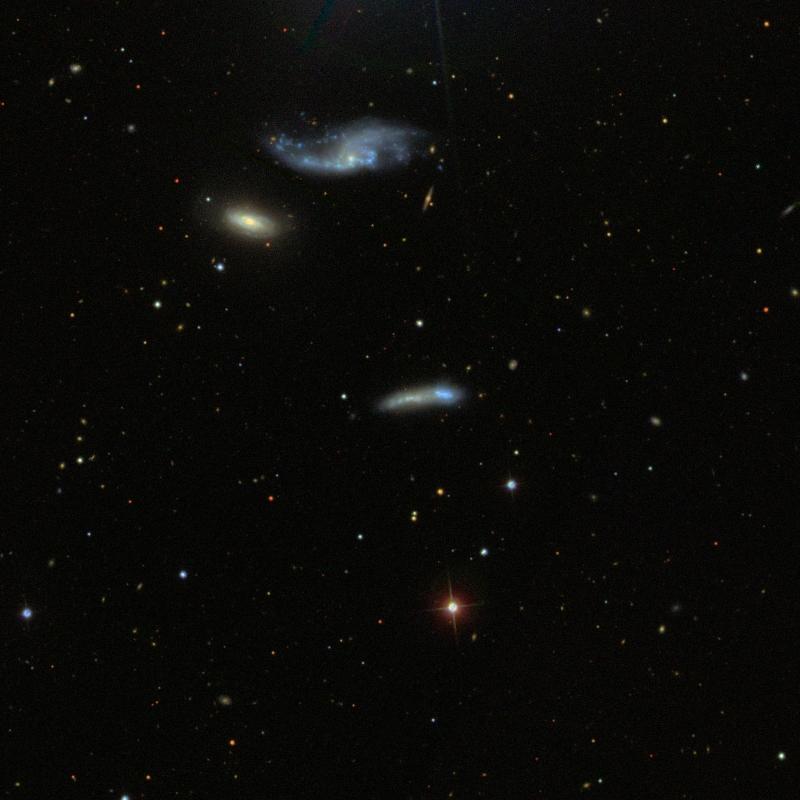
Pictured above: NGC 3994 (top left), NGC 3995 (top right), NGC 3991 (middle), UGC 6933 (right side of NGC 3991). Credit: wikisky.org
Night 4 was an added bonus, as forecasts changed from cloudy to mostly clear throughout the day. Skies cleared around 11:15pm and we quickly started looking for any last objects we wanted to enjoy under truly dark skies. The SQM readings were 21.84 and temperatures dropped from 54°F to about 46°F by 1am when most of us decided to load up the telescopes for an early departure the next morning.
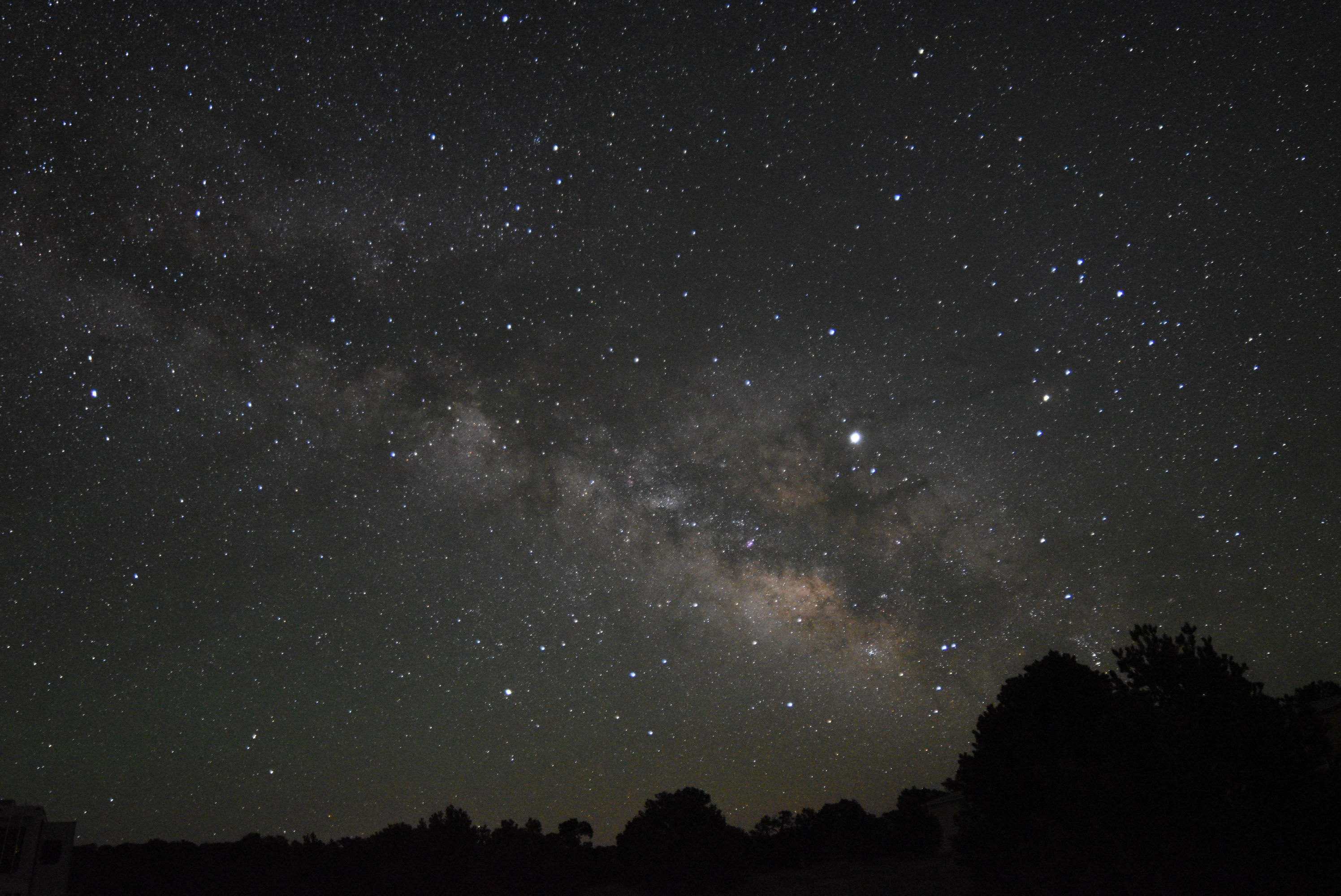
All told, I was able to log a total of 58 objects, including 30 Herschel 400 program objects and 6 Herschel II program objects. The full list of objects I logged was:
NGC 3986, NGC 3991, NGC 3994, NGC 3995, NGC 4494, NGC 4559, NGC 4562, NGC 4565, NGC 4618, NGC 4621, NGC 4625, NGC 4627, NGC 4631, NGC 4637, NGC 4638, NGC 4647, NGC 4649, NGC 4656, NGC 4660, NGC 4694, NGC 4733, NGC 4754, NGC 4762, NGC 4800, NGC 4866, NGC 5248, NGC 5308, NGC 5322, NGC 5363, NGC 5364, NGC 5370, NGC 5473, NGC 5484, NGC 5485, NGC 5486, NGC 5557, NGC 5585, NGC 5631, NGC 5676, NGC 5866, NGC 5879, NGC 5907, NGC 5921, NGC 5981, NGC 5982, NGC 5985, NGC 6118, NGC 6426, NGC 6514, NGC 6755, NGC 6756, NGC 6781, NGC 6802, NGC 6830, PGC 48114, UGC 6933, IC 2978, IC 2979.
Thanks for reading, and please check out some additional pictures in the gallery below!
Image Gallery
-
 CSAS DSS Campsite
CSAS DSS Campsite
CSAS DSS Campsite
CSAS DSS Campsite
-
 CSAS DSS Campsite
CSAS DSS Campsite
CSAS DSS Campsite
CSAS DSS Campsite
-
 Milky Way
Milky Way
Milky Way
Milky Way
-
 Milky Way
Milky Way
Milky Way
Milky Way
-
 Dobs at Sunset
Dobs at Sunset
Dobs at Sunset
Dobs at Sunset
-
 Telescope Against Milky Way
Telescope Against Milky Way
Telescope Against Milky Way
Telescope Against Milky Way
-
 NGCs 3994, 3995, 3991
NGCs 3994, 3995, 3991
NGCs 3994, 3995, 3991
NGCs 3994, 3995, 3991
-
 NGCs 5985, 5982, 5981
NGCs 5985, 5982, 5981
NGCs 5985, 5982, 5981
NGCs 5985, 5982, 5981
-
 Needle Galaxy and Companion
Needle Galaxy and Companion
Needle Galaxy and Companion
Needle Galaxy and Companion
-
 Group Photo
Group Photo
Group Photo
Group Photo
-
 Whale Galaxy and Companion
Whale Galaxy and Companion
Whale Galaxy and Companion
Whale Galaxy and Companion
https://askc.org/index.php?option=com_k2&view=itemlist&layout=category&Itemid=118#sigProIdf61c23cd69
Observing Report: SHARPLESS 2-240 LOG DESCRIPTION
By Scott Kranz
Sharpless 2-240 (Simeis 147) 05 40 33.9 +27 57 04 (J2000.0)
Date: 11/2/2013
Location: ASKC DSS
Time: 01:42 CDT
Seeing: above average transparency, SQM 21.34
Instrument: 20-inch f/4.3 dob
Eyepiece(s): 17 Nagler = 148x = 33’, 12 Nagler = 209x = 23’
Sharpless 2-240 is a supernova remnant that is roughly 3,000 light-years away and 40,000 years old. It is 3.5° by 3.2° in size. While this supernova remnant was climbing much higher in the sky now, I spent nearly two hours picking out the brighter areas. I’ve searched and logged three of the brighter areas once before, but with the night being as good as it was, I went through and tried to tease more out of the huge object. Most times the filaments were visible without a filter. An Ultra-high contrast filter helped to isolate them more, but it didn’t really help to show more detail. All were seen with averted vision only at some level and usually seen best as the area moved into the Field of View and then lost for a bit once I stopped moving the scope. I started on the west side, star-hopping from beta Taurus, El Nath and worked my way around counterclockwise.
Location, Location, Location
By Jim Ketchum (Master Observer Certificate #3)
If any of you have ever bought or sold a house you have heard what realtors say are the three most important factors to consider, “Location, location, location.” Although it’s somewhat a tongue in cheek saying, it holds a lot of truth. The same could be said about our little corner of the universe. You probably have heard the expression “life-habitable zone.” These “zones” are extremely important to sustain life as we know it. And they are extremely rare. If Earth were any closer or farther away from the sun, life would not exist on this planet. That’s just one of over a hundred factors that determine our existence on this “pale blue dot.” If any of these factors were to change, conditions would be unfavorable to sustain life on Earth. A side benefit to our location is that we reside in a very dark place, the Earth’s moon not withstanding. In fact, Earth’s solar system resides in the darkest part of the Milky Way Galaxy’s life-habitable zone. Even more interesting, the Milky Way resides in the darkest life-habitable region of its galaxy cluster, which lies in the darkest life-habitable region of its supercluster of galaxies.
My Dark Adaption Secret
By Jim Ketchum (Master Observer Certificate #3)
You aren’t in this astronomy hobby for long before you hear about the importance of dark adaptation. It takes from 20 minutes to an hour to become dark adapted. I’m guessing the 20 minutes is the minimum and to become totally dark adapted it may take up to the hour listed. To take advantage of a dark night out observing — the longer the better. I’m sure we can all agree with that I’ve had the ability to see faint objects very well. Many times I’ve tried to point out a faint galaxy to someone at my telescope only to have the person say they couldn’t see it. Sometimes it was because of the person’s experience level at viewing small faint fuzzies. It does take practice. Other times it was simply a physical ability that stood in the way. I have sort of a secret that I believe gives me an advantage in seeing small, faint deep sky objects.


